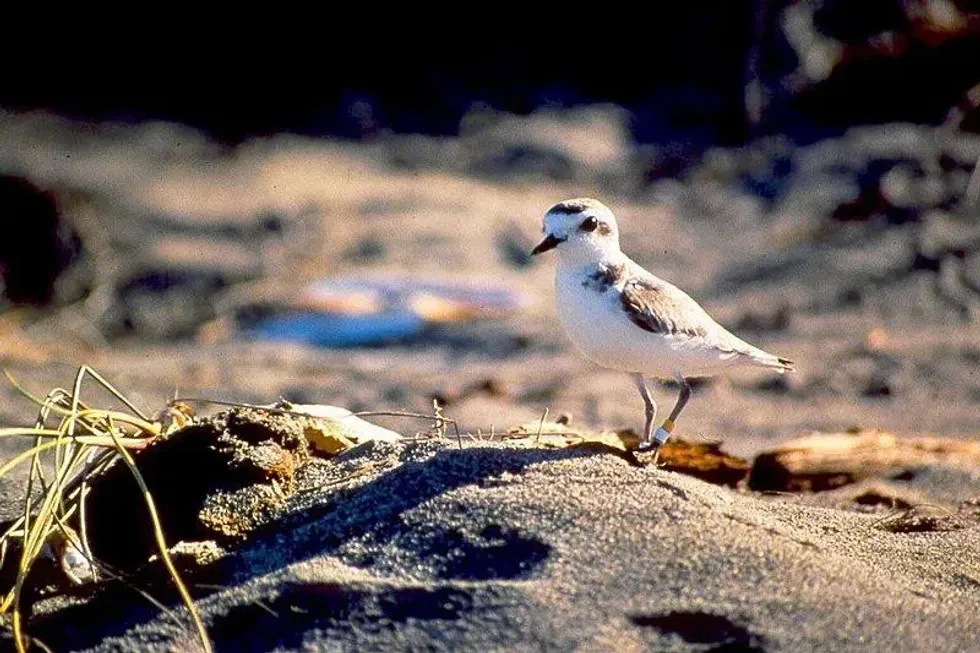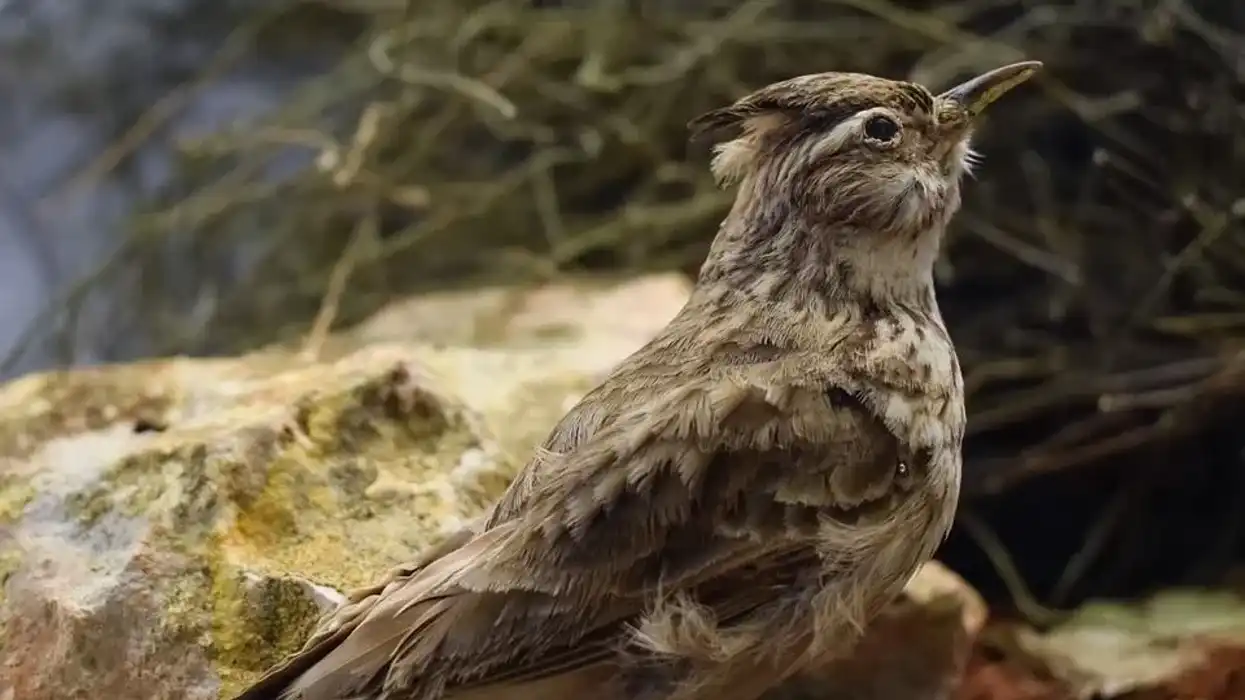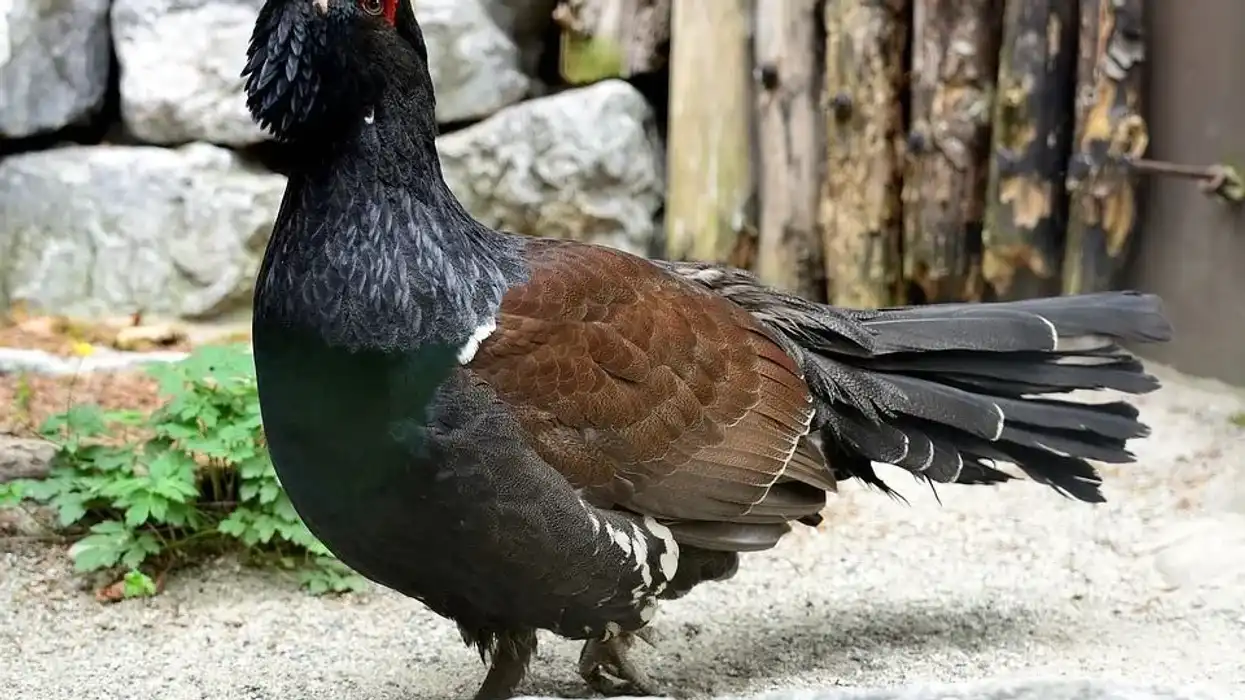Western Snowy Plover, Charadrius Nivosus as it is scientifically known belongs to the Charadriidae family and genus Charadrius. This is a small shorebird found on coastal beaches, which are also the common breeding grounds for these birds, and the range includes Washington, Oregon, Mexico, and California.
The habitat of these plovers includes beaches, sandy flats, salt pans, and dry salt ponds.
It has been observed that these birds are not found in areas or habitat types with vegetation and marshes. The breeding season takes place from March through September.
It is a small shorebird that has pale brown to gray upper parts or body and has dark spots on its head and shoulders the belly is whitish and the forehead is also white.
The chicks look similar to the adult barring certain differences. The nesting habitat includes grounds with pebbles, sand, and grasses to build nests.
These plovers are known to feed on insects, small crustaceans, and insects like flies and beetles. The population of these plovers is estimated to be around 2500-2600 on the Pacific coast.
The conservation status of this plover is Endangered and the main threats to these plovers or the population of this bird are threatened due to habitat loss and disturbance due to development.
Dogs are one of its predators and others include raccoons and foxes. Some of the snowy plovers migrate after the breeding season to the southern and northern parts in the winter season.
It is interesting to know about this shorebird and if you are interested, read about black-bellied whistling duck facts and great hornbill facts.
Western Snowy Plover Interesting Facts
What type of animal is a western snowy plover?
The western snowy plover is a bird.
What class of animal does a western snowy plover belong to?
Snowy plovers belong to the class of Aves of birds.
How many western snowy plovers are there in the world?
Recent estimations state that there are up to 2500 birds along the Pacific coast.
Where does a western snowy plover live?
The range of these birds includes or can be found on coastal beaches, which are also the common breeding grounds for these birds in Washington, Oregon, Mexico, and California (Southern California).
What is a western snowy plover's habitat?
Snowy plovers inhabit beaches, sandy flats, salt pans, and dry salt ponds. It has been observed that these birds are not found in areas or habitat types with vegetation and marshes.
Who do western snowy plovers live with?
Not much information is available about the socialization and living behavior of these birds.
How long does a western snowy plover live?
It is believed that the snowy plover can live for about three years.
How do they reproduce?
Breeding season takes place around March through September and it happens on coastal beaches. These birds are known to nest in some loose colonies or isolation.
The nest is shallow and made with shells, grass, pebbles, sand, and similar materials. Two to three black-dotted and pale eggs are laid.
Incubation takes place for about 26-32 days and is done by both parents. Incubation by the male adult is done at night and females do it for most of the day.
The young ones leave the nest after hatching and they can fly when they are about 28-32 days. In some areas, it is believed that the female adult leaves the nest after six days and mates with another male and even males tend to find other mates.
What is their conservation status?
The conservation status of this snowy plover is Threatened and the population is recorded to be declining.
Western Snowy Plover Fun Facts
What do western snowy plovers look like?

This bird is small in size and has pale to dull brown to gray upper parts of its body and dark spots on its head and shoulders and belly is whitish and the forehead is also white. The bill is slender or thin and dark-colored.
The young ones look similar to adults but the dark spots are absent. These birds have dark gray or black legs.
How cute are they?
These birds are considered cute because of their small size and whitish color.
How do they communicate?
Not much information is available about the communication of these birds but it is believed that these birds, just like others produce calls and songs.
How big is a western snowy plover?
The size of this bird is known to be between a sparrow and a robin but in general, this plover is small in size and is around 5.9-6.7 in (150-170 mm) long.
How fast can a western snowy plover fly?
The exact speed of this plover is unknown.
How much does a western snowy plover weigh?
The weight of this plover is around 0.07-0.12 lb (0.0325-0.058 kg).
What are the male and female names of the species?
There are no specific names for the males and females of the species.
What would you call a baby western snowy plover?
There is no particular name for a baby western snowy plover but they can be referred to as young, juveniles, or chicks.
What do they eat?
The diet of these plovers includes insects, small crustaceans, and marine worms. These feed on mollusks and feed on insects like flies and beetles at inland sites or areas.
Are they dangerous?
These birds are not considered to be dangerous.
Would they make a good pet?
These plovers are not quite common as pets and not much information is available about these birds as pets but it is believed that these birds do not make great pets as they are wild and migratory.
Did you know...
Western Snowy Plovers are known to be quite similar to Sanderlings.
The young ones or the juveniles gather or huddle under their parents to stay warm.
These birds are known to have an astute sense of eyesight and are considered to be very intelligent.
These were earlier considered to be Kentish Plover and were later defined as separate species.
Some snowy plovers are known to stay or live in breeding coastal areas after the breeding season and some might migrate to or travel to southern or northern parts in the winter season.
To protect the snowy plovers or for their conservation, it is advised to fly kites, play with frisbees, and do other things near or close to the water at the beach and away from their resting places. It is also advised to keep your dogs on the leash at the beaches.
The nesting location or range of these plovers is continuously declining especially, the nesting or breeding location in California or specifically southern California.
What eats a snowy plover?
The natural predators of or threats to snowy plovers include raccoons, falcons, owls, and coyotes.
Others include domestic dogs, crows, ravens, and red foxes. Dogs are known to chase these birds.
Are Western snowy plovers endangered?
The population of these birds is endangered on the Pacific Coast. The reasons include loss of habitat and their breeding and nesting habitat is threatened due to human disturbances due to development and this species is stated as a species of special concern by the state of California. The population is still declining.
Here at Kidadl, we have carefully created lots of interesting family-friendly animal facts for everyone to discover! Learn more about some other birds including Ruby-crowned kinglet facts or Horned lark facts.
You can even occupy yourself at home by drawing one on our Western snowy plover coloring pages.










